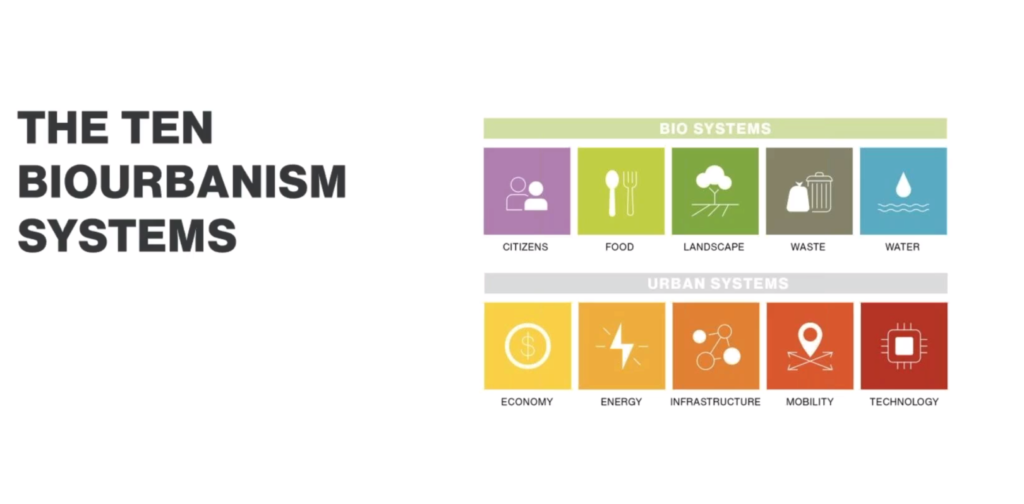BIOURBANISM: What are the benefits and challenges of applying biourbanism, a new paradigm for landscape design that considers cities as part of nature, to our residential landscape projects?
Climate change is one of the most pressing challenges facing humanity and the planet. It is affecting the physical, biological, and social systems that sustain life on Earth. As landscape designers, we have a responsibility and an opportunity to address this challenge through our work. We can create landscapes that are not only beautiful and functional, but also resilient and adaptive to the changing climate.
I just watched a lecture on @Vectorworks “coffee Breaks” with Adrian McGregor, a landscape architect from Australia, who is one of the pioneers of this approach.

He defines biourbanism as “cities = nature”, meaning that cities are part of nature and should be designed as ecological systems that are in harmony with the natural environment. He proposes a biourbanism model based on 10 interconnected systems that determine the health, prosperity, and resilience of cities: citizens, governance, economy, culture, health, water, energy, food, waste, and technology.

BIOME/ANTHROME
McGregor uses the term “anthrome’ – meaning a human-engineered biome, or a human-dominated ecosystem. He uses this term to describe cities as part of nature, rather than separate from it. He argues that cities should be designed as ecological systems that are in harmony with the natural environment.
Anthome is a word that combines anthro (human) and biome (ecosystem), and it reflects McGregor’s vision of biourbanism as a new paradigm for urban planning and design in the age of climate change.

What interested me is that McGregor argues that biourbanism is not only relevant for large-scale urban planning and design, but also for smaller residential landscape design projects. He suggests that by applying the principles and strategies of biourbanism to our gardens and backyards, we can contribute to the mitigation and adaptation of climate change at the local level.
Some of the benefits of biourbanism for residential landscape design are:
- It enhances biodiversity and ecosystem services by creating habitats for native plants and animals, improving soil quality, reducing stormwater runoff, filtering air pollutants, sequestering carbon, and providing food and medicine.
- It reduces energy consumption and greenhouse gas emissions by using renewable sources such as solar panels, wind turbines, or biofuels, minimizing artificial lighting and heating/cooling systems, and maximizing natural ventilation and shading.
- It increases water efficiency and security by harvesting rainwater, recycling greywater, installing low-flow fixtures, creating permeable surfaces, and implementing xeriscaping or drought-tolerant landscaping.
- It promotes social cohesion and well-being by creating spaces for recreation, relaxation, education, and community engagement, fostering a sense of place and identity, and enhancing aesthetic and cultural values.
Some Final Thoughts:
Biourbanism is a new paradigm for landscape design in the age of climate change. It offers a holistic and integrated approach that considers the interrelationships between humans and nature, between urban and rural areas, and between local and global scales.
By adopting biourbanism as a guiding principle for our residential landscape design projects, we can create landscapes that are not only beautiful and functional, but also resilient and adaptive to the changing climate.

